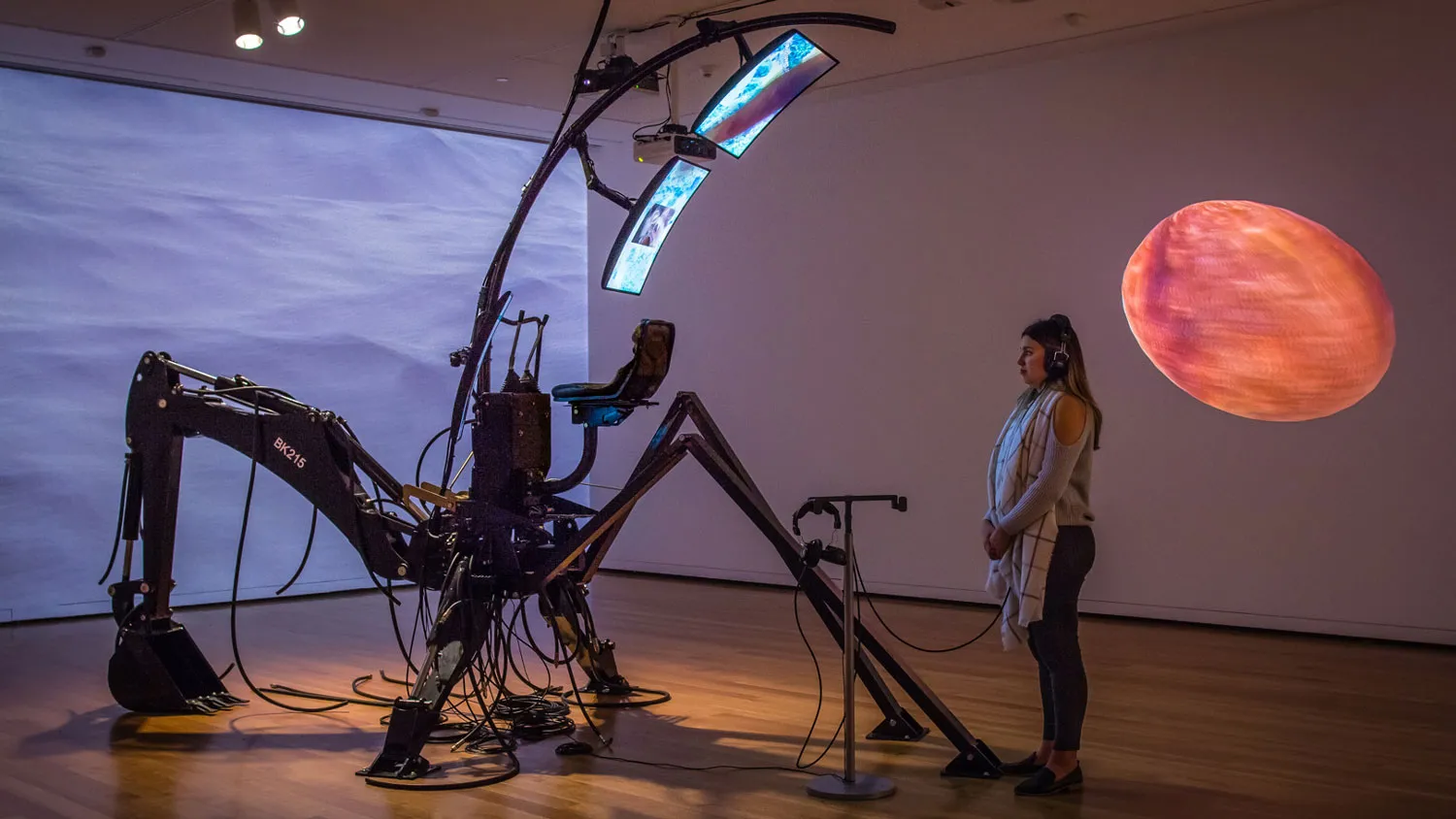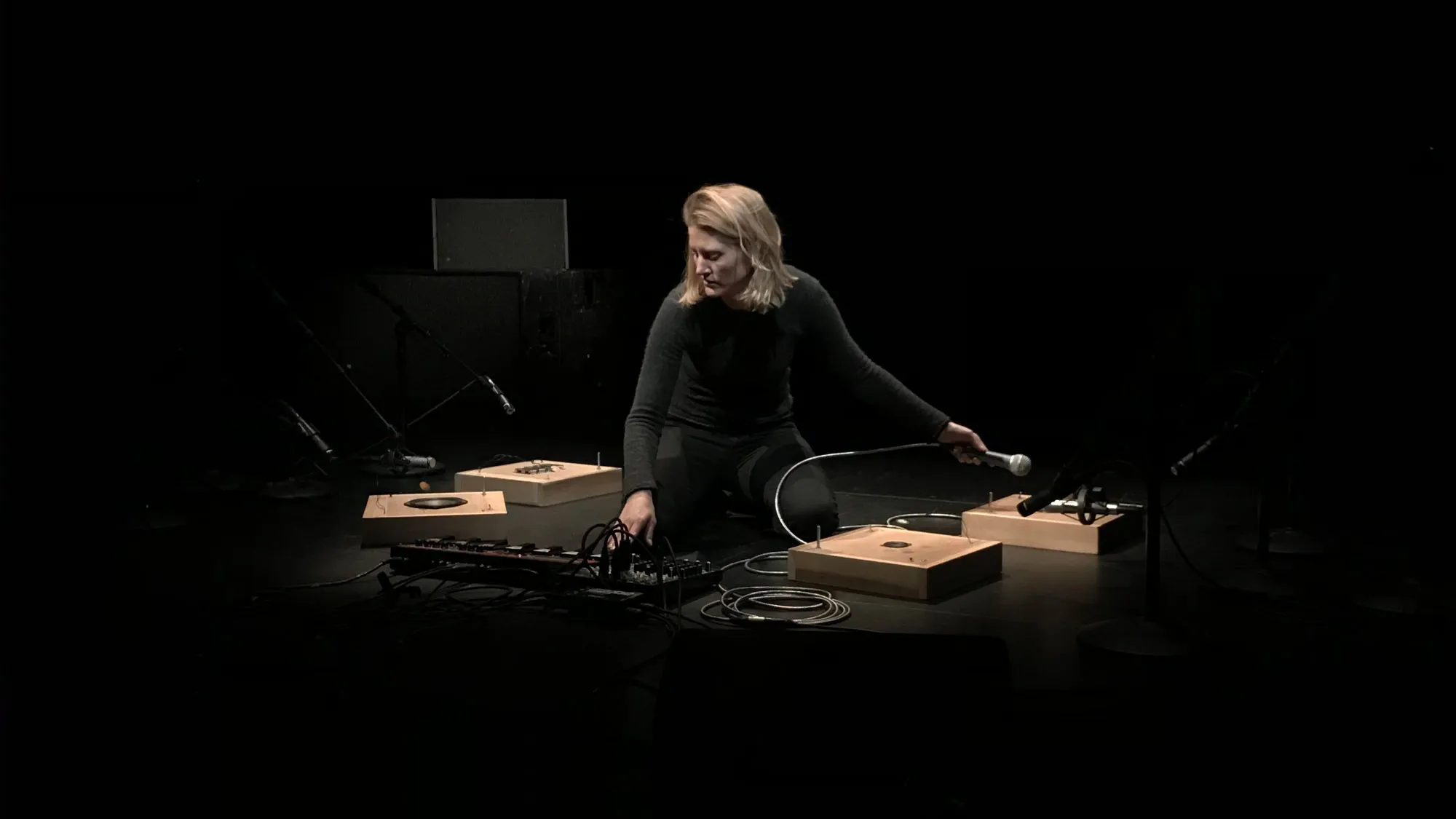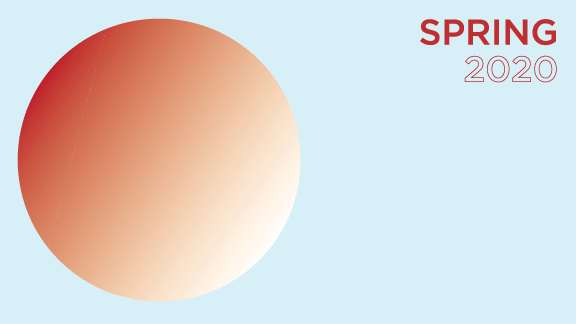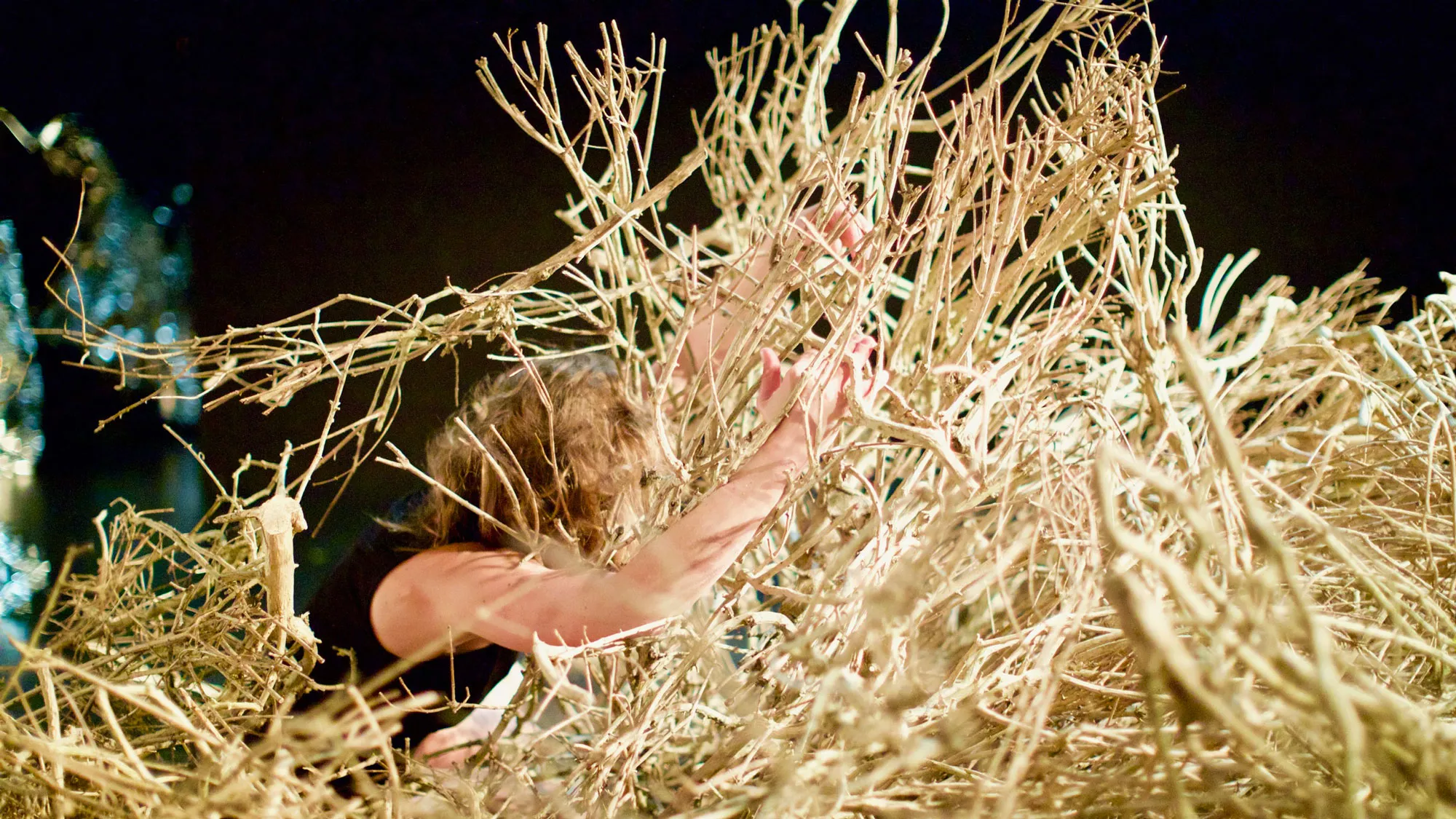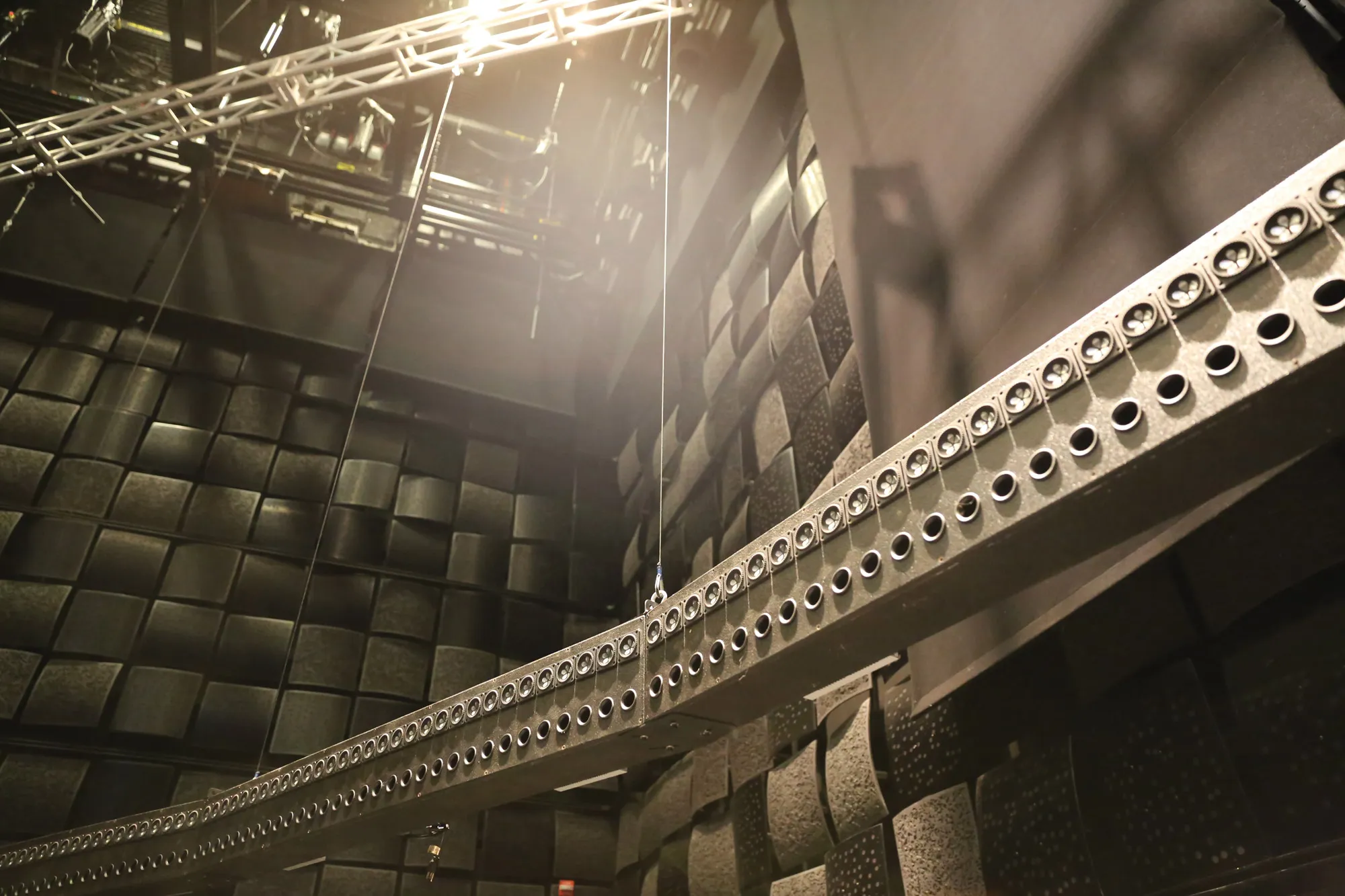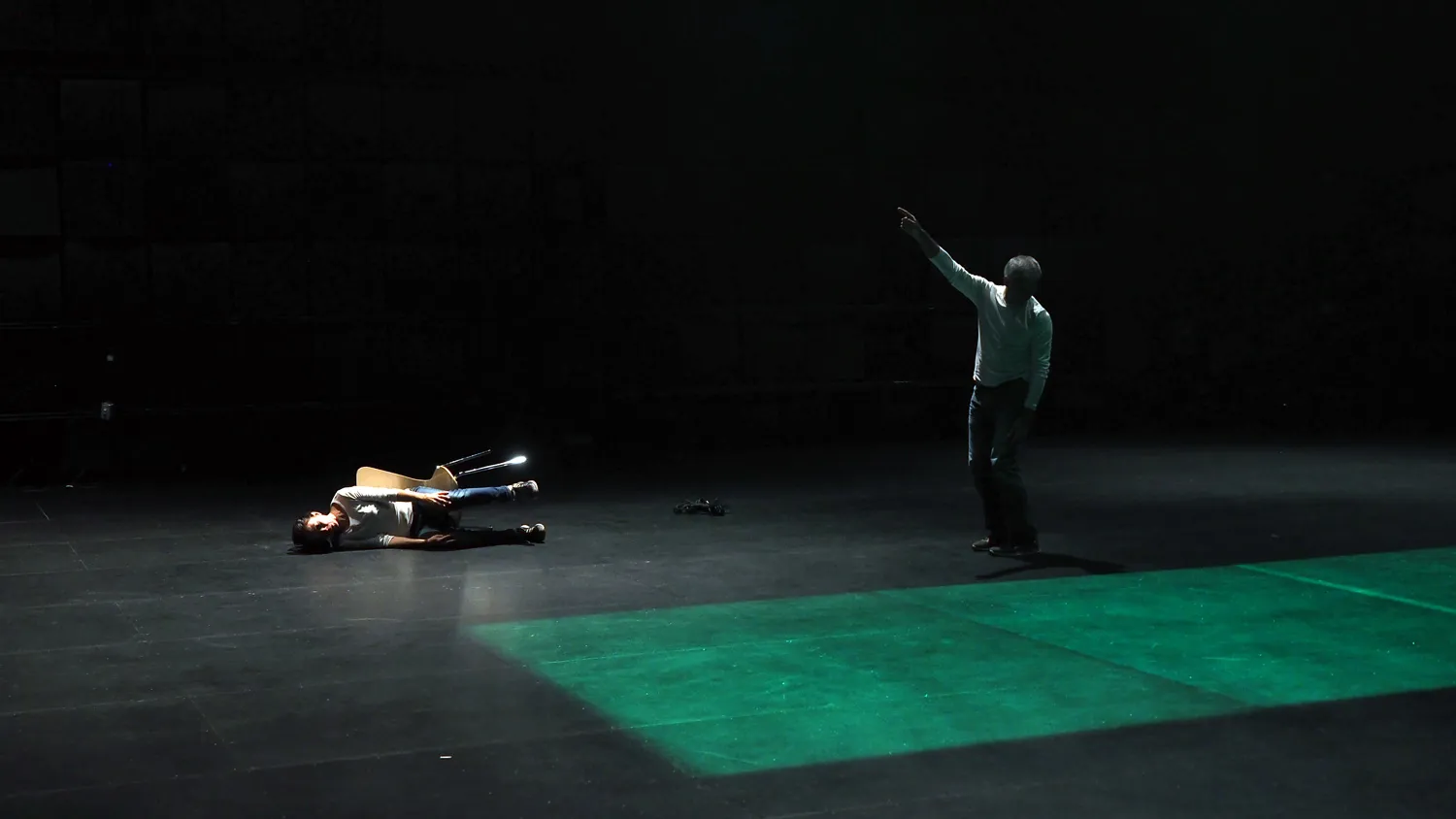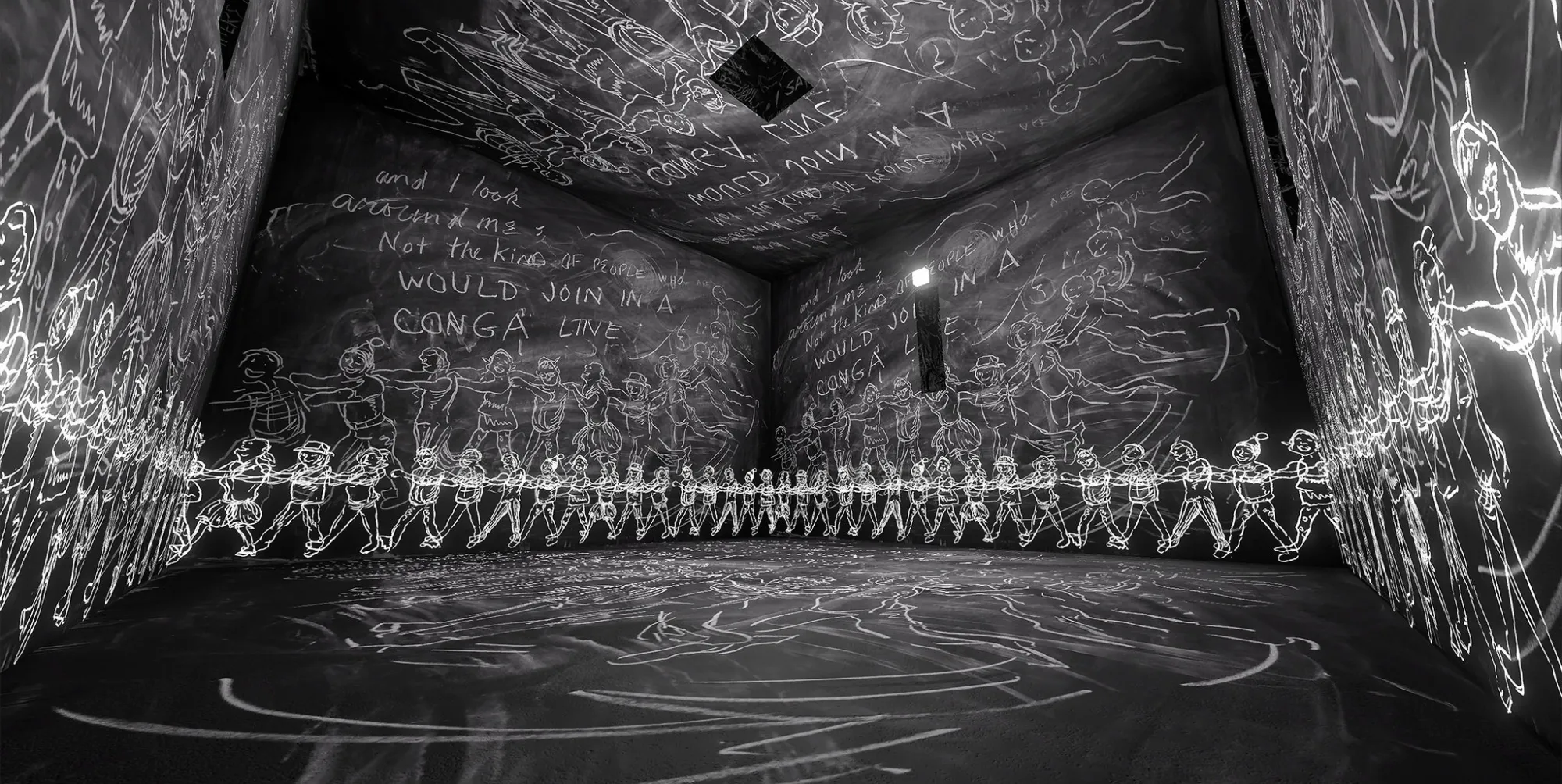Eve Sussman, an award-winning film director and visual artist and Simon Lee, a film director and installation artist, along with their full creative team, engaged in research and development for this EMPAC commission. During a three-week film production residency, the team installed a large structural set, prepared all the props, costumes, lighting setup, as well as camera testing, leading up to a week-long filming period that transformed EMPAC’s Theater stage into a full-scale soundstage.
Eve Sussman creates work that incorporates film, video, installation, sculpture, and photography. In 2003 she began working in collaboration with The Rufus Corporation—an international ad hoc ensemble of performers, artists, and musicians—producing motion picture and video art pieces including 89 Seconds at Alcázar (2004) and The Rape of the Sabine Women (2007). With humble materials and straightforward means—found snapshots, plastic toys, pinhole cameras, and projectors—Simon Lee creates evocative, dream-like videos, projections, and photographs.
No food No money No jewels is a cinematic event in three episodes loosely inspired by the Andrei Tarkovsky film Stalker and the A.A. Milne book The House at Pooh Corner that conflates the “Zone” and the “100 Acre Wood” and the themes of escaping daily life to get ‘lost in the woods’ or ‘go to the zone’ that pervades both stories.
No food No money No jewels creates parallel characters that are sometimes human, sometimes anthropomorphic. The plot suggested by both the film and the book details a journey and an adventure. Episode 1 – At the FifthStroke introduces the protagonists as some of them attempt to escape their daily lives. Episode 2 – The Zone/The Hundred Acre Wood takes the characters in and out and around in circles on a journey that finally lands them in Episode 3 – Barroom Radio or “the room” (the goal of the protagonists in Stalker) that turns out to be the radio station, first heard as an audio broadcast during Episode 1 – At the FifthStroke.
Like the film and the book the characters strikeout on adventure only to end up where they started, back in the bar in time for “tea”. Each episode will have its own distinct set built for the EMPAC theatre space – the creation of Episode 1 is detailed below as the first part of our proposed three stage residency, the sets for Episodes 2 & 3 are to be developed.

